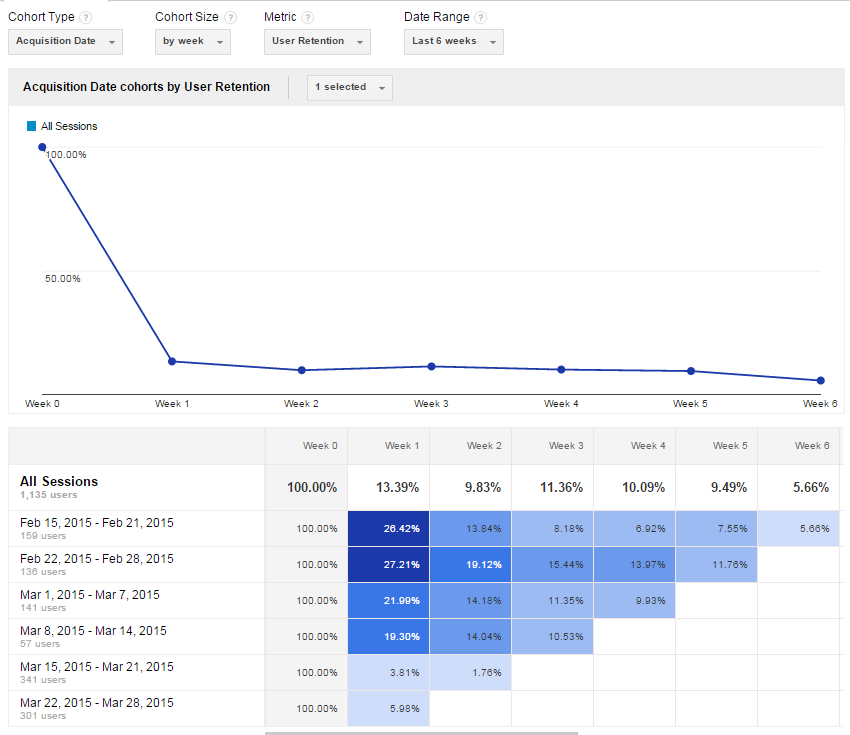Cohort analysis - is it working properly yet?
With reference Thijs de Valk's post on cohort Analysis. This new feature is still confusing me. and I'm wondering if Googles definition of a 'user' may be to blame here.
I look after the analytics of a number of websites for a large council. We have two large websites - an external website, and our main intranet - that I run analytics on. Everyone uses our intranet as their homepage as they log on. Thus our user retention should be fairly high for the intranet. We rarely lose users, staff turnover is under 5% PA.
Whilst I was initially intrigued by the high drop off rate of our external website which has about 50% new users each week, I was a little perplexed about our apparent low retention rate until I compared it to the retention rates for our intranet.
The intranet is configured as the go-to site that everyone has as their home page. This is used by every member in the organisation. This data should show an amazing retention. Only a handful of people have left the organisation in the last 6 weeks, and few have started.
Googles metrics page appears to say that they use two methods of measuring "users" I'm wondering if the first method is being applied to the measurement.
If the correct measurement of users is being applied to these stats then my colleagues are not using the intranet. Since we have under 500 employees, and about half work in an office - the number of sessions we have per month would suggest that this is not the case.
In summary either I'm not understanding cohort analysis by user retention, or otherwise I'm missing out on something fundamental here.
I look after the analytics of a number of websites for a large council. We have two large websites - an external website, and our main intranet - that I run analytics on. Everyone uses our intranet as their homepage as they log on. Thus our user retention should be fairly high for the intranet. We rarely lose users, staff turnover is under 5% PA.
Whilst I was initially intrigued by the high drop off rate of our external website which has about 50% new users each week, I was a little perplexed about our apparent low retention rate until I compared it to the retention rates for our intranet.
Our intranet drop off:
 |
| Intranet Drop off |
The intranet is configured as the go-to site that everyone has as their home page. This is used by every member in the organisation. This data should show an amazing retention. Only a handful of people have left the organisation in the last 6 weeks, and few have started.
 |
| New vs Returning user sessions |
Googles metrics page appears to say that they use two methods of measuring "users" I'm wondering if the first method is being applied to the measurement.
If the correct measurement of users is being applied to these stats then my colleagues are not using the intranet. Since we have under 500 employees, and about half work in an office - the number of sessions we have per month would suggest that this is not the case.
In summary either I'm not understanding cohort analysis by user retention, or otherwise I'm missing out on something fundamental here.


Comments
Post a Comment